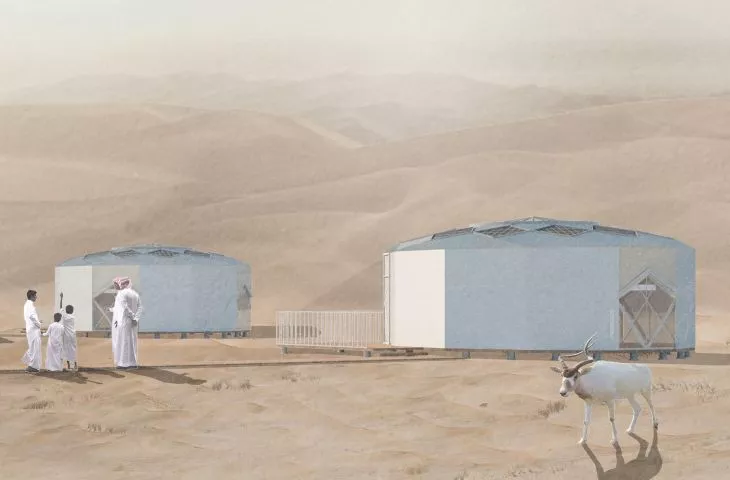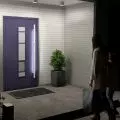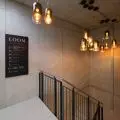Marta Mojsik, Beata Murdzia and Klaudia Niedziałek, students at the Cracow University of Technology, have created a design for accommodation units allowing observation of antelope and the night sky in the desert areas of Abu Dhabi in the United Arab Emirates. The work took part in an international competition entitled. "Mega Dunes Eco Lodges" organized by the Bee Breeders platform.
The task of the competition, organized by the Bee Breeders Architecture Competition in cooperation with the Abu Dhabi Environment Agency, was to design about 25 eco lodges that allow people to stay overnight and observe wildlife. The judges were looking for creative and bench-worthy proposals executed in a sustainable trend with consideration for the fragile natural environment. The location designated by the competition organizers is a design-intensive desert area, which is home to endangered antelopes - Arabian oryxes. The main goal of the competition was to allow visitors to observe these protected animals without interfering with their natural environment.
The authors designed two types of houses: standard and vip
© Marta Mojsik, Beata Murdzia, Klaudia Niedziałek
accommodation in the desert
Inspired by the Milky Way, the students designed a premise consisting of 25 accommodation units and a public space that includes three facilities. The dormitories were divided into standard ground-floor units and a vip with a mezzanine bedroom. In order to fully allow observation of wildlife and the starry night sky, each facility was designed in the shape of a spherical tent on a circular plan with a skylight in the central part. In addition, a slight elevation above the site facilitates the flow of wind-borne sand. The lighting used by the students is controlled and concentrated, while not polluting the surroundings.
The load-bearing structure of all objects is made in skeletal technology
© Marta Mojsik, Beata Murdzia, Klaudia Niedziałek
The proposed common space is a complex of three interconnected buildings with a reception area, waiting room, restaurant, restrooms, yoga room and technical facilities. Moving the walls of the buildings away from the edge of the terrace formed an open-air bypass. The whole area has been covered, creating a shaded relaxation zone - guests can rest on a stretched net.
The common space consists of three interconnected objects
© Marta Mojsik, Beata Murdzia, Klaudia Niedziałek
As the authors say about the interior design :
In the interiors we focused on exposing the wooden structures. By thickening it, we obtained a beautiful decoration of the walls. We wanted each accommodation to be a cozy and at the same time modern interior, and the public space to be a place of rest and common activity.
all facilities were made in accordance with the idea of sustainable development
© Marta Mojsik, Beata Murdzia, Klaudia Niedziałek
construction and geometric forms
The load-bearing structure of all the objects was made using skeletal technology in the form of interconnected wooden poles, which form the form of a sphere. The geometric forms resulting from the divisions are single window openings and skylights, and the foundations are raised 30 cm above ground level. Exterior walls with exposed wooden structure inside and foil covering the thermal layer on the outside are finished with rain film. Cottages of the standard type consist of a terrace, vestibule, kitchen with dining room and bedroom with bathroom. The vip type is additionally equipped with a mezzanine with a bedroom, dressing room and bath.
See also the Flamingo Observation Center project by students of the Cracow University of Technology, awarded in another Bee Breeders competition.
compiled by Dobrawa Bies
illustrations courtesy of Marta Mojsik, Beata Murdzi and Klaudia Niedziałek




















































